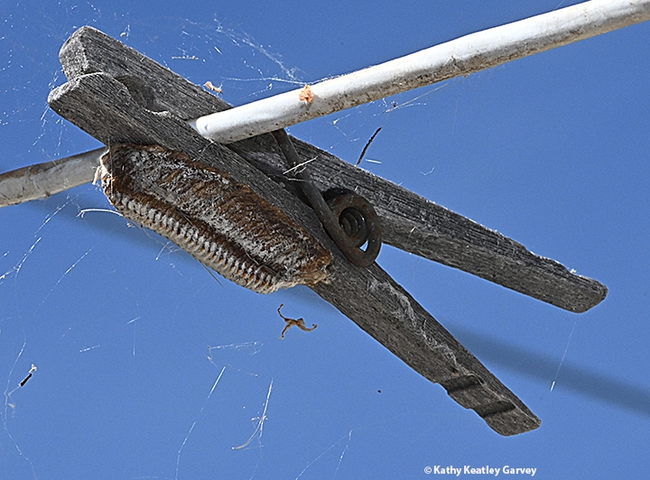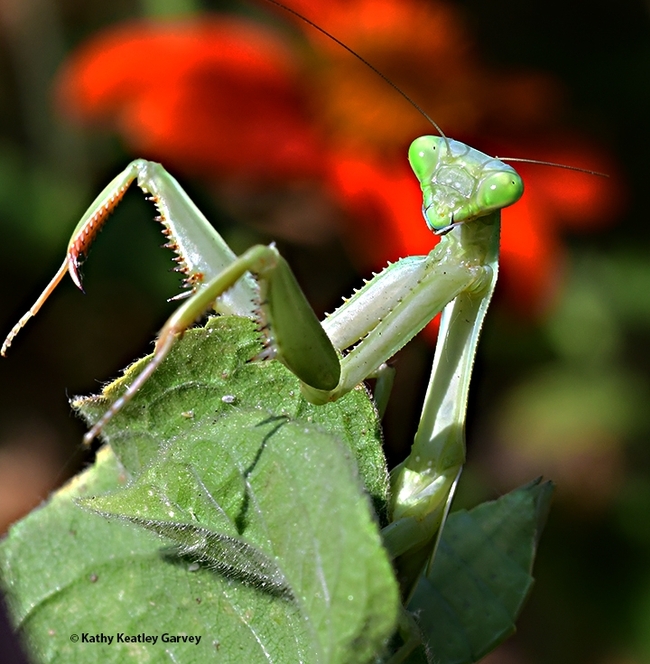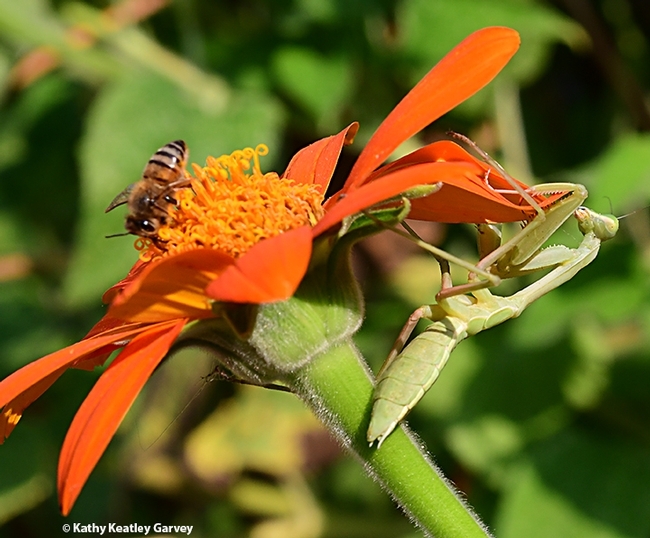No doubt you've seen a praying mantis egg case, or ootheca, on a tree, shrub, fence or post.
But have you ever seen one attached to a clothespin on an outdoor clothes line?
So here we were Thursday afternoon, hanging freshly laundered dog blankets on the clothes line.
We grabbed one clothespin after another, carefully fastening Fido's favorite blankets to the line to dry in the 80-degree temperature.
One more reach....Whoa! What's that?
Can't use that one. There's a ooth on it.
A praying mantis, Stagmomantis limbata, had apparently pinned her hopes to a clothespin. Or maybe that was her PIN number?
"Too funny," commented Lynn Kimsey, director of the Bohart Museum of Entomology and a UC Davis distinguished professor of entomology. "What a weird place to put your ooth."
Our little gravid gal must have climbed the eight-foot-high clothes pole last fall; walked the line (ala Johnny Cash?); and discovered the "perfect place" to deposit her ooth--right above a patch of Mexican sunflowers (Tithonia rotundifola) buzzing with bees and fluttering with butterflies.
"I've seen egg cases on outdoor furniture, predator guards on duck boxes, on buildings between bricks, trees, and even garden implements like pots, watering cans, and tools," said praying mantis expert Andrew Pfeifer, who now studies horticulture/landscape design at North Carolina University. "It's a Stagmomantis limbata ooth for sure; the hatch rate will be 150 or less."
Oothecas don't usually hatch until around June, but with the temperatures soaring here in Vacaville, it could happen "even within the month," Pfeifer says.
In September 2018, we watched a praying mantis deposit her ooth a few feet from that clothesline. That gal chose a redwood stake. (See photos on Bug Squad blog).
Now we wait for the nymphs to emerge...and scramble to eat one another...and prey on bees and butterflies...and the life cycle begins.
Attached Images:

An eggcase or ootheca warming on a clothespin in Vacaville, Calif. This is from a Stagmomantis limbata. (Photo by Kathy Keatley Garvey)

This image of a gravid Stagmomantis limbata, taken last summer in a Vacaville pollinator garden, may have been the mama. (Photo by Kathy Keatley Garvey)

The predator and the prey. A female mantis, Stagmomantis limbata, eyes a honey bee in a pollinator garden in Vacaville last summer. She missed. (Photo by Kathy Keatley Garvey)